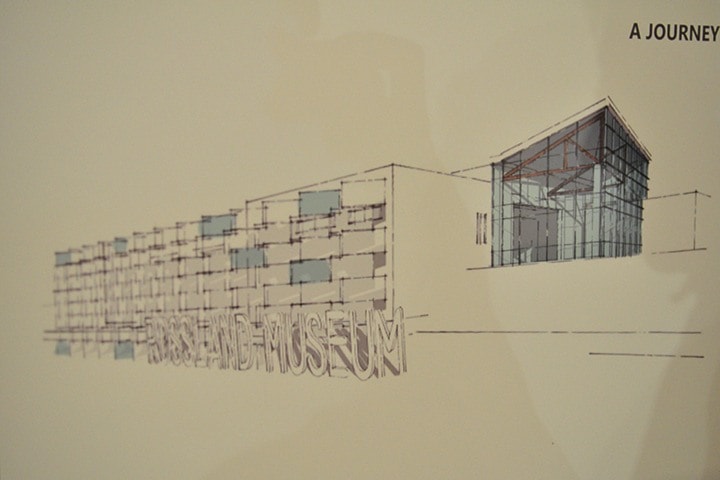When the city’s museum lost access to tours of the Le Roi Mine two years ago it left a hole bigger than the shafts sunk into the earth’s crust on Red Mountain.
Closed permanently over safety issues arising from the instability of the rock encasing the mining tunnels, the mine tour was the major drawing card for the museum, and its loss nearly folded the museum’s hand.
Visits to the Rossland Historical Museum plummeted as a result—dropping by over half in one year—prompting the formation of a Museum Advisory Committee to investigate a way to stop the bleeding and rehabilitate the institution.
That solution might have come Tuesday night, as the consultant hired by the City of Rossland to unearth the necessary nuggets may have stuck it rich with a motherlode of ideas.
Vancouver consultant Don Luxton gave his initial pitch to over 45 people at an open house at the museum—and a second presentation later in the evening—on what the venerable institution could look like under a re-design.
And, naturally, that change related to mining, the raison d’être of the city of Rossland, and included recreating a section of underground mine tunnel (21 metres, 70 feet), complete with rocks, rails and water drips.
Incorporating the mining experience into the re-design of the museum was brilliant, said one man in the audience, when everyone had a chance to glimpse the basics of the redesign.
“It really gives this city an opportunity to regain what was lost from the museum,” he said. “We need to highlight the history of this crazy little town … and we need to engage the children, and this would do it.”
Just like recording assays for a potential mining site, the raw materials for a successful museum are present on the site, said Luxton in his presentation.
“It’s amazing what you can do with this museum, with these artifacts and this site,” he said. “And when you can bring this all together you have a winner.”
That winning ticket could cost a total of $3 million—less than half the cost of a complete rebuild—with the entire re-design broken down into modules, so the entire vision could be achieved in stages as the money became available.
The new design would open up the interior, creating a larger entrance gallery and adding on a full glass, well-lit atrium to welcome people into the museum.
It would include sections on geology, power, community history (including skiing and mountain biking) and the history of mining. The current ski shed section of the museum would be demolished and the ski artifacts brought into the body of the museum.
As well, the outside artifacts would be housed in an industrial shed—built in a style evoked by the time period—with level access and siting to create an outdoor stage for events and classes.
The shed would help tie together the exterior artifacts and create and secure the assets as well.
Space for research would be created, as well as centralizing storage and maximizing and rotating the exhibits on display.
The exterior could also reflect the mining history, suggested Luxton, with metal cladding—possibly zinc—adorning the exterior in a decorative way.
“It doesn’t have to be an expensive intervention,” he told the crowd. “But you really need something exciting and to reflect the industrial aspect of the city’s history.”
Signage outside of the museum and within the city would also be improved, helping direct people to the museum.
“The museum is hard to find right now, and some people who come to Rossland don’t know it is here,” Luxton explained.
One man asked if the design of the building could reflect the city’s history, in keeping with many of its current heritage buildings.
“One thing that must be clear is that we haven’t designed it,” said Luxton. “It’s all conceptual at this stage.”
But there was only so much that could be done with the building without spending an enormous amount of money, he said.
“Whatever we do to the building will have to be balanced with cost,” he said.
Although the city will not be called upon to directly fund any part of the project, it will have a role in that it is a city-owned structure and city staff could provide some in-kind donations for demolition work or clean up.
The next step for the advisory committee will be to figure out a funding formula, based on a combination of grants, corporate sponsorship and partnerships with senior levels of government.
As well, the committee will be asked to “re-brand” the museum, said Stolte. The role of the museum could evolve as the building does, becoming more of a discovery centre or an educational centre, as well as a focal point for community-based events.
“You need to get people put to the museum to do different things, not just to come and see the displays,” said Luxton.
That would also involve renewed programming, interactive events and displays, enhancing the online archives and backing up and preserving the research.
“Museums are not just about the past,” said Luxton. “They are the heart and soul of the community. We want to re-engage and bring that back to Rossland.”
